Abstract
Research focused on occupational exposure has been one of the cornerstones of epidemiological research into the etiology of cancer. It is appropriate to critically assess the contribution of this research effort and to assess the potential for making significant progress in the future in unraveling the etiology of cancer by studying the occupational environment. The study of the occupational environment has indeed been very fruitful. It is likely that there remain many more carcinogens to be discovered, but we have not deployed adequately sensitive study methods. The two major obstacles to quality research have been inadequate exposure assessment and insufficient sample sizes. Quality exposure assessment requires the participation of trained experts (industrial hygienists, chemists, etc.); it also requires an adequate information base on the exposures that occur in different workplaces. We need structures and career paths that facilitate the participation of exposure experts in epidemiological research. We need active large-scale industrial hygiene surveys to better characterize the U.S. workplace. This will be useful for epidemiological studies and for public health purposes. Community-based case-control studies will need to be much larger than they have been traditionally, with 1000 as a minimum number of cases and controls.
Full text
PDF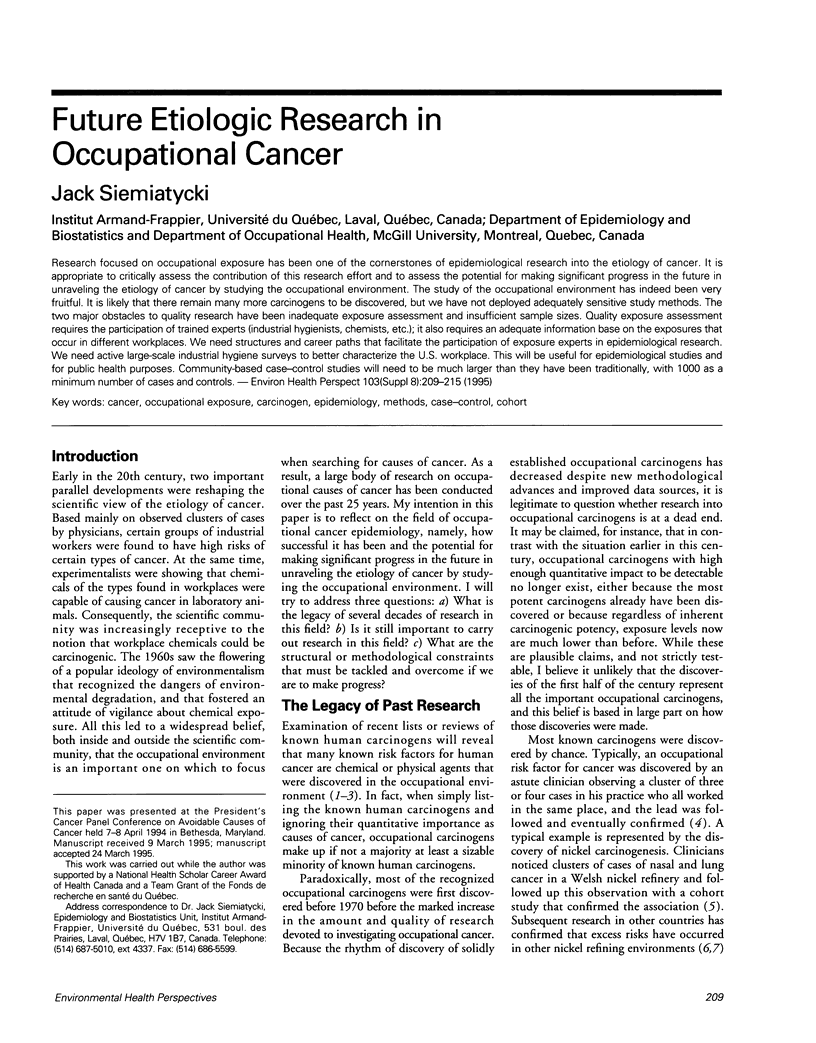
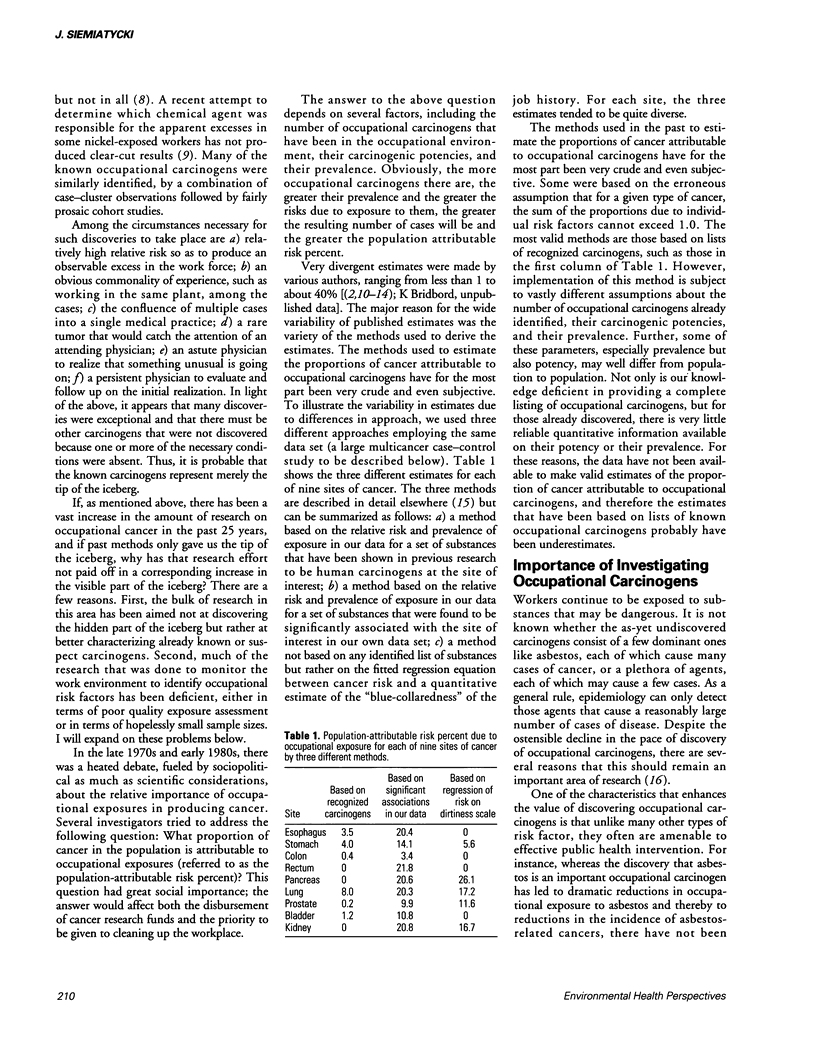
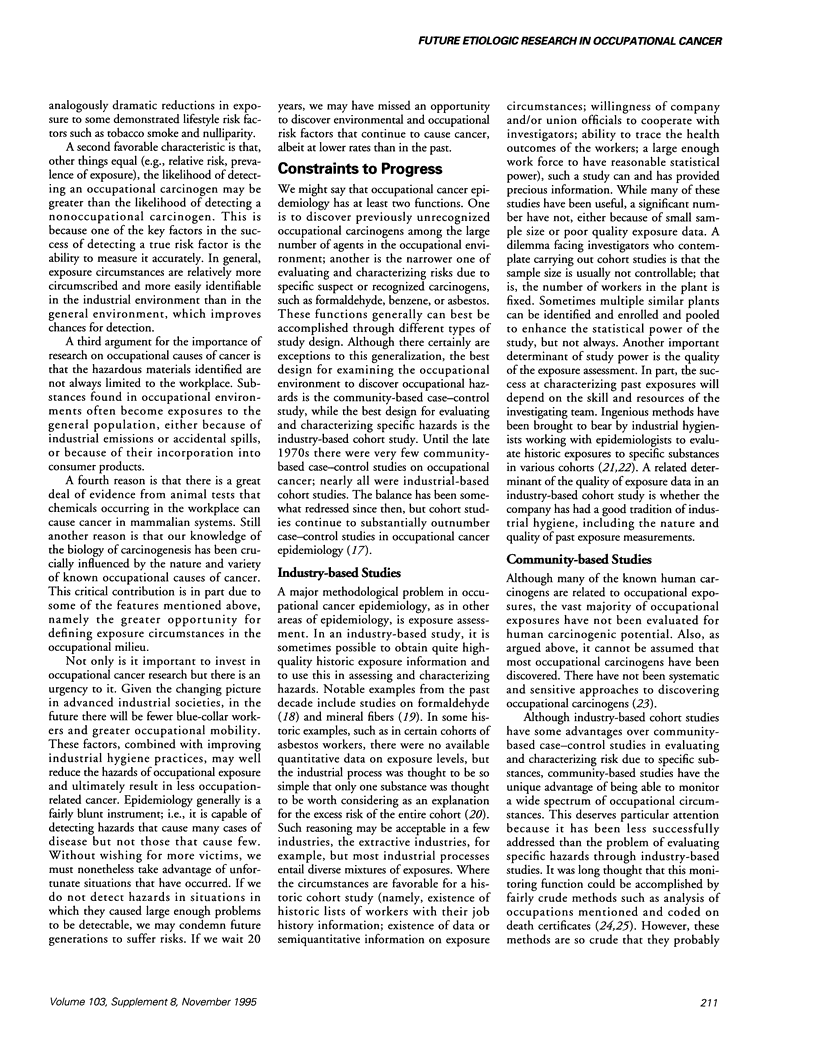
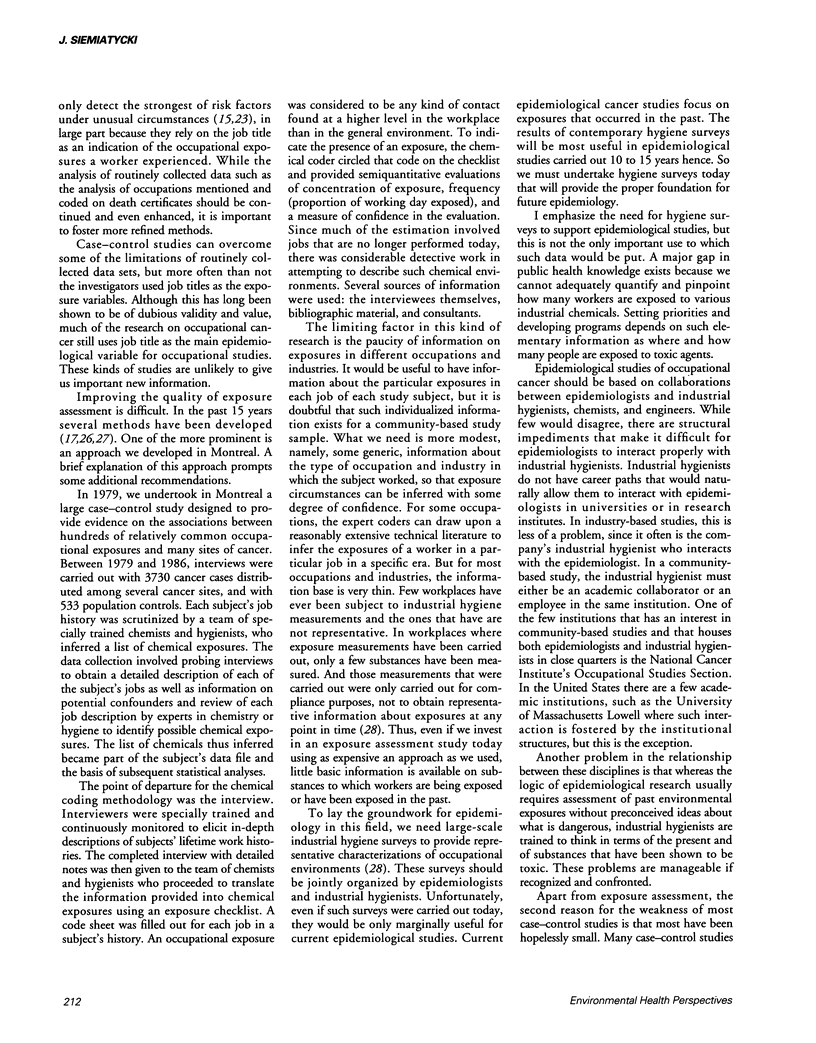
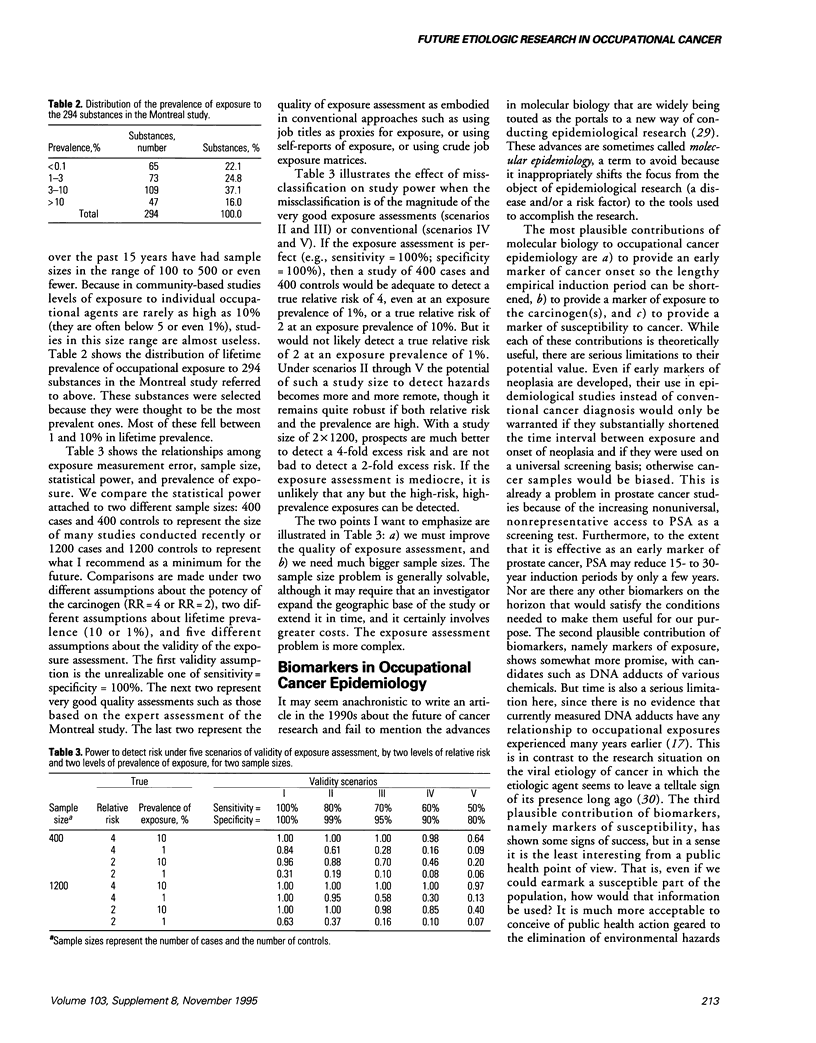
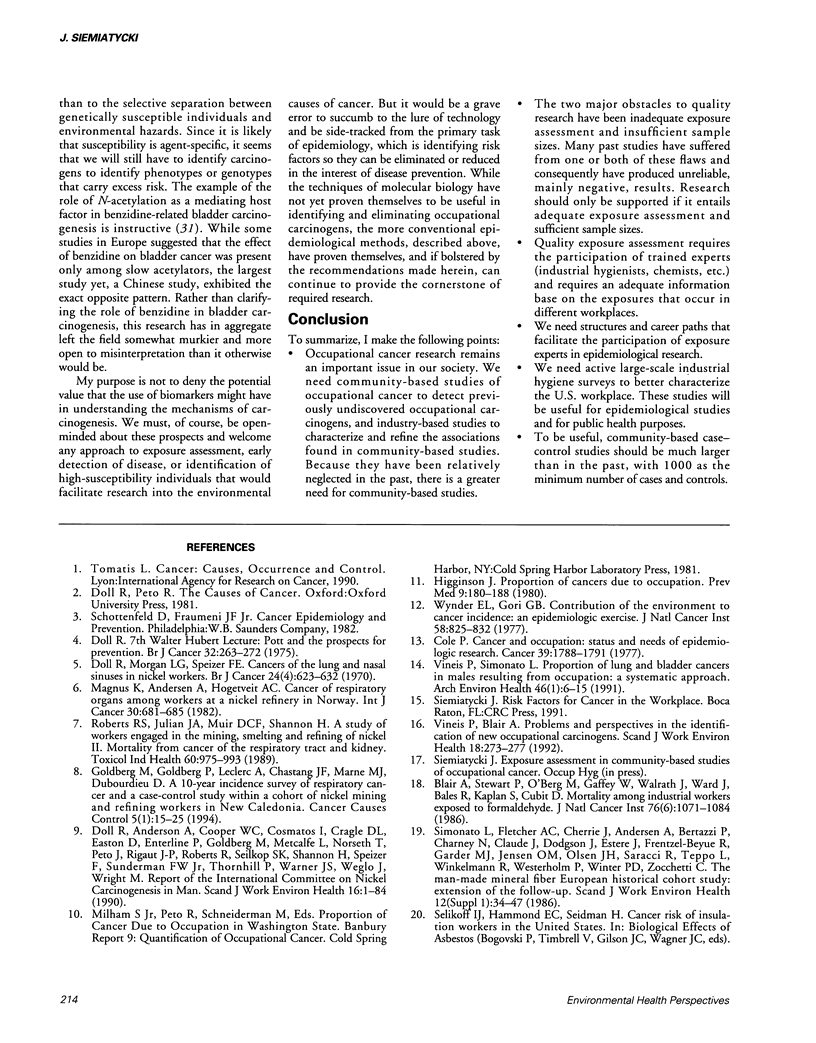
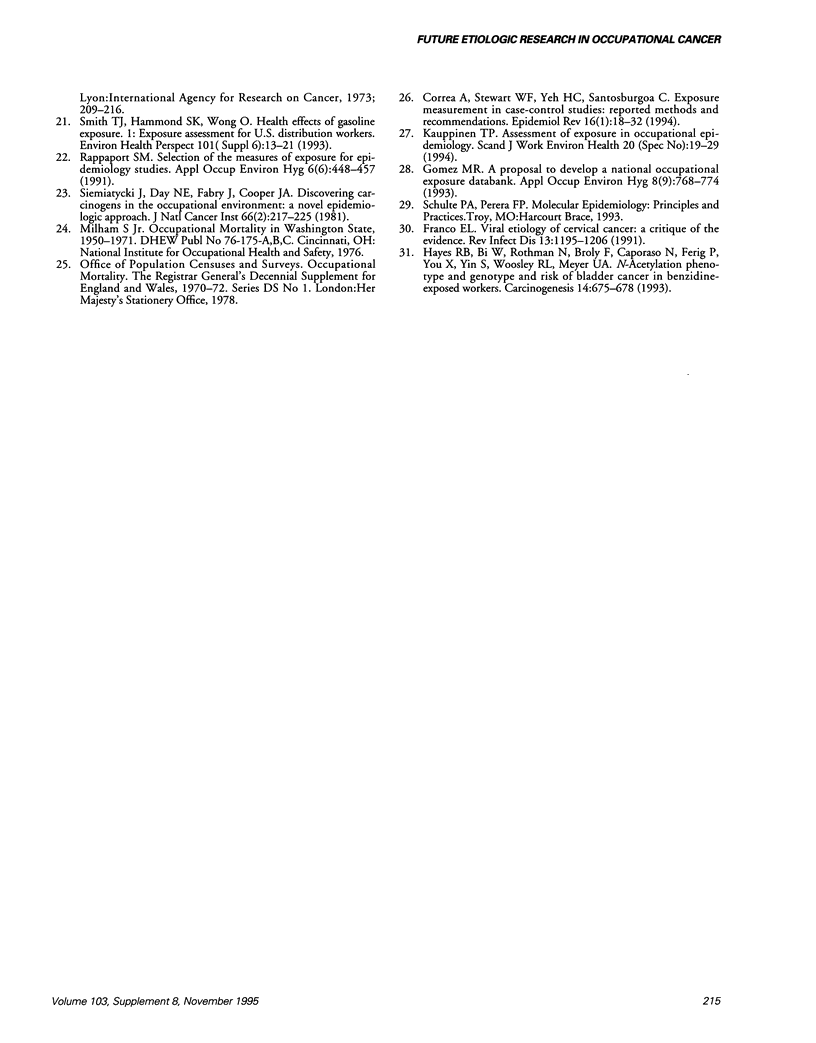
Selected References
These references are in PubMed. This may not be the complete list of references from this article.
- Blair A., Stewart P., O'Berg M., Gaffey W., Walrath J., Ward J., Bales R., Kaplan S., Cubit D. Mortality among industrial workers exposed to formaldehyde. J Natl Cancer Inst. 1986 Jun;76(6):1071–1084. [PubMed] [Google Scholar]
- Cole P. Cancer and occupation: status and needs of epidemiologic research. Cancer. 1977 Apr;39(4 Suppl):1788–1791. doi: 10.1002/1097-0142(197704)39:4+<1788::aid-cncr2820390807>3.0.co;2-5. [DOI] [PubMed] [Google Scholar]
- Correa A., Stewart W. F., Yeh H. C., Santos-Burgoa C. Exposure measurement in case-control studies: reported methods and recommendations. Epidemiol Rev. 1994;16(1):18–32. doi: 10.1093/oxfordjournals.epirev.a036142. [DOI] [PubMed] [Google Scholar]
- Doll R., Morgan L. G., Speizer F. E. Cancers of the lung and nasal sinuses in nickel workers. Br J Cancer. 1970 Dec;24(4):623–632. doi: 10.1038/bjc.1970.76. [DOI] [PMC free article] [PubMed] [Google Scholar]
- Doll R. Part III: 7th Walter Hubert lecture. Pott and the prospects for prevention. Br J Cancer. 1975 Aug;32(2):263–272. doi: 10.1038/bjc.1975.212. [DOI] [PMC free article] [PubMed] [Google Scholar]
- Franco E. L. Viral etiology of cervical cancer: a critique of the evidence. Rev Infect Dis. 1991 Nov-Dec;13(6):1195–1206. doi: 10.1093/clinids/13.6.1195. [DOI] [PubMed] [Google Scholar]
- Goldberg M., Goldberg P., Leclerc A., Chastang J. F., Marne M. J., Dubourdieu D. A 10-year incidence survey of respiratory cancer and a case-control study within a cohort of nickel mining and refining workers in New Caledonia. Cancer Causes Control. 1994 Jan;5(1):15–25. doi: 10.1007/BF01830722. [DOI] [PubMed] [Google Scholar]
- Hayes R. B., Bi W., Rothman N., Broly F., Caporaso N., Feng P., You X., Yin S., Woosley R. L., Meyer U. A. N-acetylation phenotype and genotype and risk of bladder cancer in benzidine-exposed workers. Carcinogenesis. 1993 Apr;14(4):675–678. doi: 10.1093/carcin/14.4.675. [DOI] [PubMed] [Google Scholar]
- Higginson J. Proportion of cancers due to occupation. Prev Med. 1980 Mar;9(2):180–188. doi: 10.1016/0091-7435(80)90073-0. [DOI] [PubMed] [Google Scholar]
- Kauppinen T. P. Assessment of exposure in occupational epidemiology. Scand J Work Environ Health. 1994;20(Spec No):19–29. [PubMed] [Google Scholar]
- Magnus K., Andersen A., Høgetveit A. C. Cancer of respiratory organs among workers at a nickel refinery in Norway. Int J Cancer. 1982 Dec 15;30(6):681–685. doi: 10.1002/ijc.2910300602. [DOI] [PubMed] [Google Scholar]
- Report of the International Committee on Nickel Carcinogenesis in Man. Scand J Work Environ Health. 1990 Feb;16(1 Spec No):1–82. doi: 10.5271/sjweh.1813. [DOI] [PubMed] [Google Scholar]
- Roberts R. S., Julian J. A., Muir D. C., Shannon H. S. A study of mortality in workers engaged in the mining, smelting, and refining of nickel. II: Mortality from cancer of the respiratory tract and kidney. Toxicol Ind Health. 1989 Dec;5(6):975–993. doi: 10.1177/074823378900500606. [DOI] [PubMed] [Google Scholar]
- Siemiatycki J., Day N. E., Fabry J., Cooper J. A. Discovering carcinogens in the occupational environment: a novel epidemiologic approach. J Natl Cancer Inst. 1981 Feb;66(2):217–225. [PubMed] [Google Scholar]
- Simonato L., Fletcher A. C., Cherrie J., Andersen A., Bertazzi P. A., Charnay N., Claude J., Dodgson J., Estève J., Frentzel-Beyme R. The man-made mineral fiber European historical cohort study. Extension of the follow-up. Scand J Work Environ Health. 1986;12 (Suppl 1):34–47. [PubMed] [Google Scholar]
- Smith T. J., Hammond S. K., Wong O. Health effects of gasoline exposure. I. Exposure assessment for U.S. distribution workers. Environ Health Perspect. 1993 Dec;101 (Suppl 6):13–21. doi: 10.1289/ehp.93101s613. [DOI] [PMC free article] [PubMed] [Google Scholar]
- Vineis P., Blair A. Problems and perspectives in the identification of new occupational carcinogens. Scand J Work Environ Health. 1992 Oct;18(5):273–277. doi: 10.5271/sjweh.1577. [DOI] [PubMed] [Google Scholar]
- Vineis P., Simonato L. Proportion of lung and bladder cancers in males resulting from occupation: a systematic approach. Arch Environ Health. 1991 Jan-Feb;46(1):6–15. doi: 10.1080/00039896.1991.9937423. [DOI] [PubMed] [Google Scholar]
- Wynder E. L., Gori G. B. Contribution of the environment to cancer incidence: an epidemiologic exercise. J Natl Cancer Inst. 1977 Apr;58(4):825–832. doi: 10.1093/jnci/58.4.825. [DOI] [PubMed] [Google Scholar]


